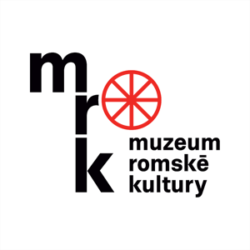Štefan Oláh
Štefan Oláh, born 1921 in Modranka near Trnava, died about 1996.
-
Testimony abstract
Štefan Oláh came from a large musical family; his father performed with his own band in Dalmatia. His father played from sheet music; he also had a brass band and, according to what he said himself, invented the first tangos in Slovak (I like your black eyes, Ramona).
In October 1943, Štefan Oláh, at the age of twenty-two, enlisted in the [Slovak] Army in Liptovský Mikuláš. From there he was sent to the village of Dolný Kubín and then to the front. He fought in the Crimea for two months, and after the Germans retreated he made his way to the other side, to the Russians. In Baku and in the town of Usman he underwent parachute training - he made five parachute jumps from a balloon and seven jumps from a plane. Then he was sent to the front to fight the Germans. He was in Lvov, followed by fighting in the Carpathian Mountains, where he was wounded in the right arm and treated in a hospital in the town of “Esentuky mid Voda”.[1] After a few months, he heard that Humenné had already been liberated and was transferred there at his own request. He was in charge of thirty soldiers to whom he distributed provisions; he was discharged in April. Oláh stated that he was at the front with wise people, for example, Ludvík Svoboda, and also with Klement Gottwald.
- [1] Probably Yessentuki, a spa town at the foot of the Caucasus, part of a group of spa resorts known as Kavkazskiye mineralnye vody.
Štefan Oláh settled in Humenné after the war, married and had four children, one boy and three girls. He played the saxophone, worked as a waiter, performed for guests in the evenings and, according to what he said himself, taught 135 saxophonists. After the death of his wife Jolana Goroľová, who died at the age of thirty-eight, he retired because he had only three fingers on his right hand after an injury. He lived alone with his children and made sure they were educated. As a result of the hardships of the war, he had health problems in his old age and his right leg was amputated.
How to cite abstract
Abstract of testimony from: HÜBSCHMANNOVÁ, Milena, ed. “Po židoch cigáni.” Svědectví Romů ze Slovenska 1939–1945.: I. díl (1939–srpen 1944). 1. Praha: Triáda, 2005. ISBN 80-86138-14-3, 211-212 (ces), 213-214 (rom). Testimonies of the Roma and Sinti. Project of the Prague Forum for Romani Histories, https://www.romatestimonies.com/testimony/stefan-olah (accessed 10/24/2025) -
Origin of Testimony
The text originated when Štefan Oláh dictated his memories in Romani to his daughter Olga Kurejová, née Oláhová, who sent the notes to the editors in 1996. Štefan Oláh was already ill at the time and died shortly afterwards.
Olga Kurejová, daughter-in-law of the artist Aladar Kurej from Humenné,[1] worked for years as a teacher in a kindergarten in one of the largest Roma settlements, Podskalka, near Humenné.
- [1] See his testimony in the database.
-
Where to find this testimony




